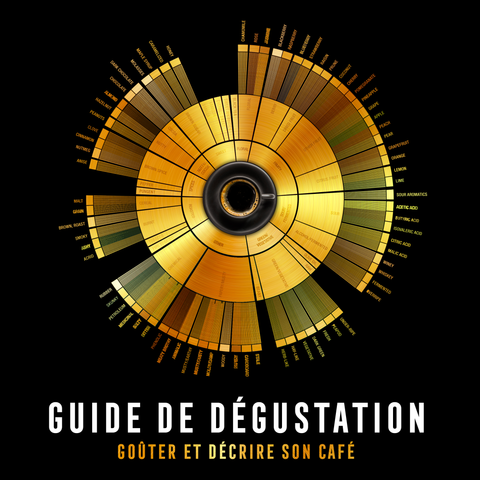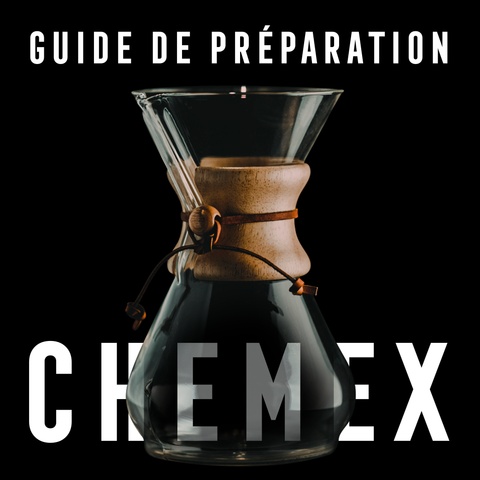
This term is probably the most used when it comes to describing a coffee. However, every time someone asks me if a coffee is strong my mind gets confused. And I ask back, “What do you mean full-bodied?” ". So, it's the customer who gets confused in his explanations. Most of the time, the term “full-bodied” is associated with high roasting levels, exceeded on the 2nd crack, with a very black and very oily grain. So, visually, the term full-bodied is used to determine by many people, a level of advanced roasting.
When someone asks me, when talking about a liquid coffee, if it is strong, I often discover that the term "full-bodied" is associated with the strength of a coffee (ratio of more than 30%) rather than with the aromas found there. At this level, we come closer to the use that oenologists make of it. We should also use the term full-bodied to define the body of the beverage, its texture, in addition to its strength. In the case of wine, the term full-bodied is associated with a higher alcohol level, and a richness on the palate confirming the presence of solid particles taken from the grapes. I admit to liking full-bodied wines. If I transpose to the world of coffee, the term full-bodied applies to coffee in a liquid state and not to the beans, which have a body and a syrupy texture, and with strong aromas.
What makes coffee more complex is that the same coffee, at the same roast level, can be strong or not, influenced by the preparation method. A piston will then have more body than a filtered preparation. The dosage, grind size and brewing time will also have an impact on the cup. And of course the level of roasting will allow certain aromas to be brought to the fore, or to mask them, will also have an impact on the cup, the roasting attenuating the acidity as it progresses.

As for the origin of the coffee, it is above all the method used for pulping which will have an impact on the body of the coffee. Dry pulped coffees (Natural, semi-pulped) are generally much more textured, and therefore have more body.
Briefly, this method involves placing the coffee fruit in the sun until it turns from red to brown, then peeling the dried hull in one step to reveal the bean. This is a method suited to arid regions, where the sun and heat can dry the beans inside the fruit skin, which remains intact.
So, I recommend using the term full-bodied when describing the body of a coffee and some more dominant aromas. It is therefore the liquid which will have more body, therefore full-bodied. And we will avoid the term to describe the level of roasting.
I suggest you read this other text:
Taste and describe your coffee
By discussing it, we will end up having a common vocabulary.
Finally, if you are looking for strong coffee, I recommend that you buy coffee from our range Prestige or Select Reserve . These coffees have much more intense and present aromas, we could say that they are full-bodied and delicious as can be!
Dany




Comments (6)
Bonjour, je ne comprends toujours pas “corsé”. La définition Goscini dans Lucky Luke ?
Vous passez subtilement de corsé à corps. Corpsé en quelque sorte. Fâcheux vu que “corpse” en anglais veut dire cadavre.
Donc malgré mon âge avancé je ne sais toujours pas si corsé reflète la richesse en arômes , la sensation en bouche (“mâche”, comme pour le vin) l’amertume, qui me semble constante et sévère dans les cafés dit corsés (et que je fuis) , et liée comme “corsé” à l’intensité de la torréfaction.
Les grains noirs huileux sont pour moi (des goûts et couleurs …) rédhibitoires.
Merci pour vos précisions z’éventuelles !
Corsé. Ca ne veut pas dire selon les habitudes des corses?
Allo Jean-François, c’est une question assez complexe qui dépend de ta machine, du café, de la quantité utilisée, etc. Je te conseille la lecture de ce livre: Coffee roaster’s companion, Scott Rao.
Je possède un torréfacteur domestique. Quelle est la température idéale, en fonction du temps, pour torréfier le café. Est ce que le café vert a augmenté récemment ? Merci
Bonjour. Je m’instruis à vous lire. Je croyais bêtement que cela dépendait du dosage café/eau :)
Oui, c’est exactement ça! J’ai aussi beaucoup de mal en boutique à cause de ce terme. J’ai coutume de dire à mes clients que nous avons tous une idéee assez précise de ce qu’est un café “corsé”, mais que nous n’avons pas tous la même!… On y arrive en discutant.